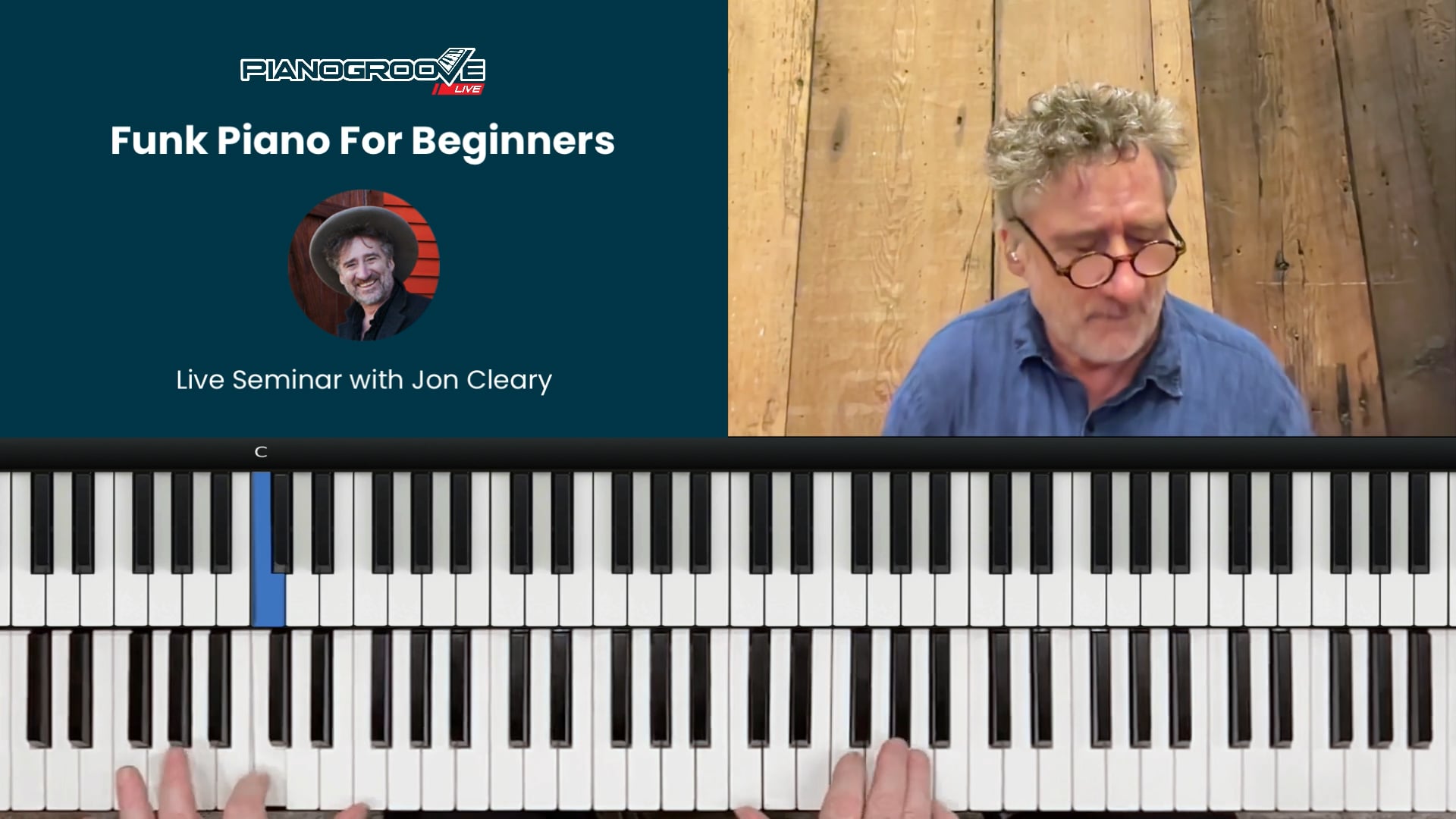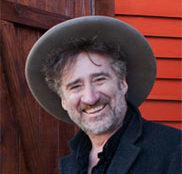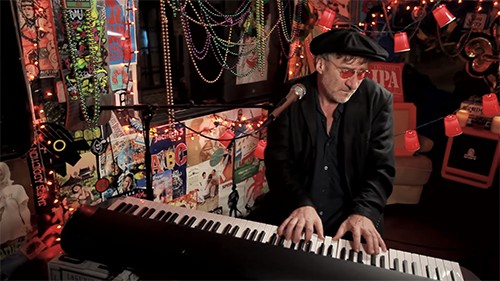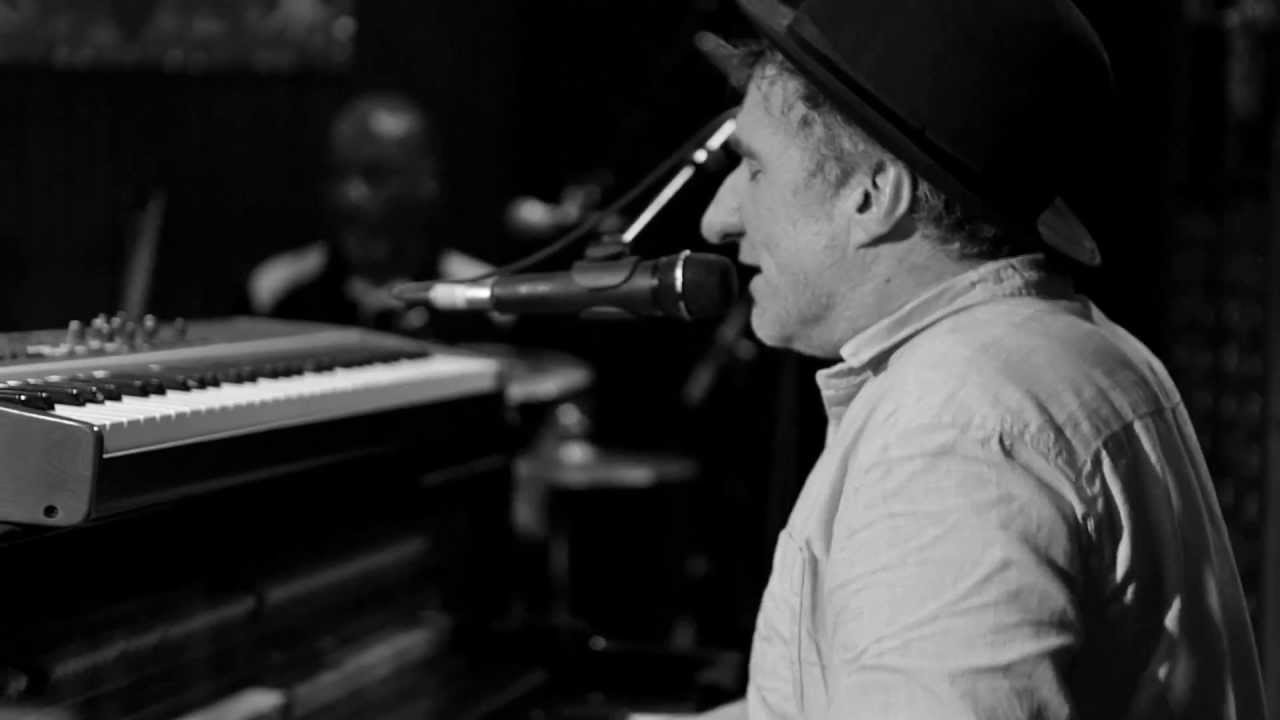

Jon Cleary
Jon Cleary is a British-born American funk and R&B musician based in New Orleans, Louisiana, where he has studied the musical culture and life of New Orleans for 35 years.
Seminar Description
Seminar Description
Beginner’s Guide to Funk Piano
Welcome to this beginner’s lesson on funk piano! In this session, we dive into the essential rhythms, voicings, and techniques that define the funk piano style. Whether you’re new to funk or looking to refine your groove, this lesson will introduce you to the fundamental elements of syncopation, rhythmic feel, and harmonic concepts that bring funk music to life.
The Origins of Funk Piano
Funk music has deep roots in rhythm and blues, jazz, and gospel, with New Orleans being one of the birthplaces of its unique groove. Drummer Earl Palmer was among the first to use the word “funk” to describe a certain rhythmic feel—one that was raw, syncopated, and infectious. Unlike other musical styles that focus heavily on melody or harmony, funk is primarily about rhythm, making every instrument—especially the piano—part of the percussive foundation.
Understanding Funk Rhythm
At its core, funk is about contrast. It relies on strong downbeats (the "1" and "3" of a measure) but gains its signature feel from syncopated accents that fall between the beats. These offbeat accents create tension and resolution, which is what makes people want to dance.
A great way to explore funk rhythm is by studying classic tunes like "Thank You (Falettinme Be Mice Elf Agin)" by Sly and the Family Stone. The placement of accents and ghost notes in between straight beats is what creates the signature groove.
Example: Straight vs. Funky
- A basic, non-funky rhythm: 1, 2, 3, 4
- A funky rhythm: 1 and-a 2, (silence) 3, 4 and
By emphasizing the offbeats, we create that signature funk bounce.
The Role of the Piano in Funk
Unlike in jazz, where the piano often takes on harmonic extensions and color, funk piano is more percussive. In a band setting, the pianist mimics elements of the rhythm section—playing parts that could be heard on a bass drum, snare, or hi-hat.
One key technique is the "clavinet-style" playing, where the piano mimics the sound of a clavinet—a keyboard used by funk legends like Stevie Wonder. This involves:
- Playing short, staccato chords
- Using "chicken scratch" rhythms (quickly repeating chords with subtle rhythmic variations)
- Employing "ghost notes" (soft, percussive notes that add texture without being fully voiced)
Left-Hand Basslines & Right-Hand Chords
In funk piano, the left hand often plays a repetitive "two-note bass groove", while the right hand plays rhythmic stabs or comping chords. This allows the pianist to emulate a full rhythm section.
A simple funk groove in C might involve:
- Left hand: C (low) → C (higher) → G → back to C
- Right hand: Short, percussive C7 stabs
By keeping the left hand steady and the right hand syncopated, you start to feel the funk groove come alive.
Harmony & Voicings in Funk
Funk harmony is largely dominant and minor-based, often using:
- 7th chords (C7, F7, G7)
- Minor 7th chords (C-7, F-7, Bb-7)
- Suspended chords (sus4 and sus2) for added tension
- "Crunchy" voicings with minor and major thirds played together (a key element in blues and funk)
A great example of this is playing a C7 chord with an added Eb in the right hand. This creates a gritty, bluesy feel that is central to funk.
Developing Funk Independence
One of the biggest challenges in funk piano is hand independence—the ability to keep a steady left-hand groove while the right hand plays syncopated rhythms. To develop this:
- Tap your foot on the downbeats (1 and 3)
- Clap the backbeat (beats 2 and 4)
- Play chords on the offbeats (the spaces between the numbers)
Practicing this approach slowly and building up speed will help internalize the funk feel.
🎹 5 Practice Tips for Funk Piano
-
Start Simple & Lock in the Groove – Focus on basic quarter-note and eighth-note rhythms before adding syncopation.
-
Use a Metronome or Drum Loop – Funk is all about timekeeping—practice with a steady beat to develop rhythmic accuracy.
-
Learn from Classic Funk Tunes – Study the piano parts of artists like The Meters, Stevie Wonder, and James Brown’s band.
-
Develop Left-Hand Independence – Play a steady bass groove while experimenting with different rhythmic accents in the right hand.
- Think Like a Drummer – Treat the piano like a percussive instrument—use staccato chords, ghost notes, and dynamic contrast to shape your playing.
By integrating these concepts into your playing, you’ll develop a strong foundation in funk piano and start to internalize the feel that makes this style so infectious. Keep practicing, listen deeply to the groove, and most importantly—have fun with the funk! 🎶






Hey everyone,
Tomorrow I will add the light-up keyboard and improve the mic/piano balance.
Cheers,
Hayden
Wow. Great seminar! Going to get stuck into this v soon.
That was a fantastic seminar and really brought a smile to my face! Thank you!
for someone who just joined, what is the recommended path of courses to take to be able to play funk piano?
Hi Renan,
From a harmonic standpoint, I recommend the following courses:
Extended Harmony: pianogroove.com/jazz-piano-lessons/extended-chords-voicings/
Rootless Harmony: pianogroove.com/jazz-piano-lessons/left-hand-voicings/
Altered Harmony: pianogroove.com/jazz-piano-lessons/altered-harmony-upper-structure-triads/
This harmonic theory is essential for playing any style of modern improvised music (jazz, blues, gospel, funk, Brazilian, cuban etc…)
I would also recommend to study walking bass lines to develop a strong left hand: pianogroove.com/?s=walking+bass
Finally, learning from our favourite recordings is very important, particularly with a rhythmically-nuanced style like funk music, and so working through our ear training exercises will help you to transcribe bass lines and chord voicings from your favourite recordings so that you can play along with them and emulate the grooves: pianogroove.com/exercises/
We don’t currently have a funk course for beginners – it’s just covered here and there in seminars – but I have added this to our upcoming lesson schedule. I will keep you posted on developments.
Talk soon,
Hayden